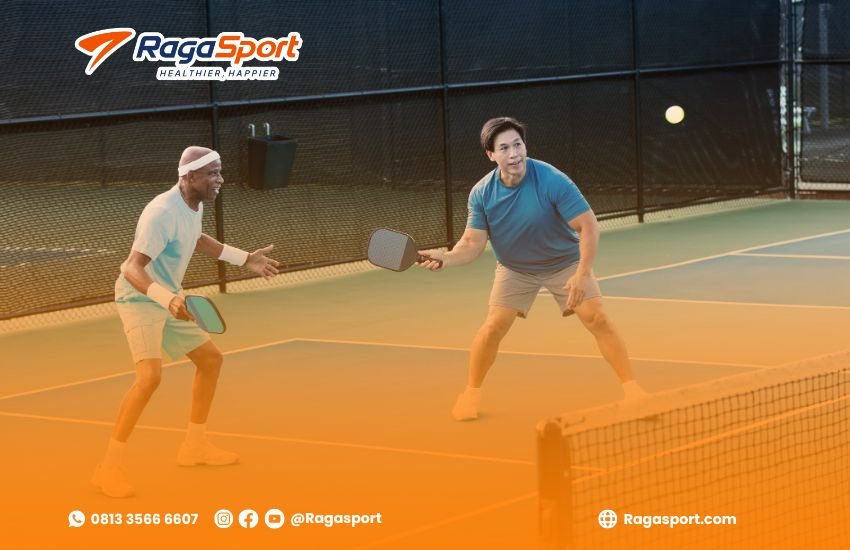Pickleball is one of the fastest-growing sports in the world. Whether you’re building a court for a community, school, sports club, or even your backyard, understanding the complete process of pickleball court construction is essential. This guide will walk you through everything you need to know—design, materials, budgeting, and hiring the right contractor.
Table of Contents
What is Pickleball and Why Is It So Popular?
Pickleball is a paddle sport that combines elements of tennis, badminton, and ping-pong. It’s easy to learn, fun for all ages, and doesn’t require intense athleticism, making it incredibly inclusive. The increasing demand for pickleball courts reflects the sport’s meteoric rise in popularity across all demographics.
Court Dimensions and Layout
Before starting construction, it’s important to understand the standard court dimensions:
- Court Size: 20 feet wide by 44 feet long (same for singles and doubles)
- Total Recommended Playing Area: 30 feet wide by 60 feet long
- Net Height: 36 inches at the sidelines, 34 inches in the center
If space allows, it’s a good idea to leave extra room around the court for safety and comfort.
Surface Options for Pickleball Courts
Choosing the right surface is critical for safety, performance, and durability. Common options include:
- Asphalt: Cost-effective and widely used for outdoor courts.
- Concrete: Durable, low-maintenance, and long-lasting.
- Modular Tiles: Great for indoor or portable setups; available in multiple colors.
- Cushioned Surfaces: Ideal for reducing joint stress and enhancing player comfort.
For professional courts, a high-quality acrylic coating is often applied for grip and color customization.
Construction Process Overview
Here is the step-by-step breakdown of the typical pickleball court construction process:
1. Site Evaluation and Planning
- Analyze land slope, drainage, and soil condition.
- Ensure zoning and permit compliance.
- Decide between indoor vs. outdoor setup.
2. Excavation and Base Preparation
- Clear the site of vegetation and debris.
- Level the ground and install a compacted gravel base.
- Lay sub-base materials to support drainage and structural integrity.
3. Concrete or Asphalt Pouring
- Pour the slab with proper slope (1% recommended for drainage).
- Allow for curing time (typically 30 days for concrete).
4. Surface Coating and Painting
- Apply multiple layers of acrylic coating.
- Use masking to create court lines according to USA Pickleball standards.
- Add anti-slip additives for player safety.
5. Net System Installation
- Install permanent net posts with ground sleeves.
- Attach an adjustable, tournament-grade net.
6. Fencing and Lighting (Optional)
- Chain-link fencing keeps balls in play.
- LED lights can enable night play and increase usage.
Pickleball Court Construction Cost
The average pickleball court construction cost varies depending on materials, location, and court features. Here’s a rough estimate:
| Court Type | Estimated Cost (USD) |
|---|---|
| Basic Asphalt Court | $15,000 – $25,000 |
| Concrete Court | $20,000 – $35,000 |
| Premium Build (Fencing, Lights, Cushioned Surface) | $35,000 – $50,000+ |
Custom elements such as logos, multi-court systems, or covered courts will raise the price.

Indoor vs. Outdoor Pickleball Courts
- Outdoor Courts: Require weather-resistant materials and proper drainage.
- Indoor Courts: Need suitable flooring like wood, synthetic, or cushioned tiles; HVAC is also a consideration.
Outdoor courts are more popular, but indoor courts are ideal for clubs, schools, and year-round play.
Common Mistakes to Avoid
- Ignoring Drainage: Poor water management leads to cracks and slippery surfaces.
- Using Inexperienced Contractors: Hire professionals who specialize in court construction, not just general paving.
- Improper Measurements: A few inches off can impact gameplay and tournament compliance.
Work with experienced court builders to avoid costly rework and ensure longevity.
Choosing the Right Pickleball Court Contractor
When selecting a contractor, consider the following:
- Experience in Sports Construction: Ask for examples of past pickleball or tennis courts.
- Warranty Offered: A good builder will stand by their work.
- Material Knowledge: They should be able to explain surface types and their pros/cons.
- Custom Design Capabilities: Can they build to your aesthetic and functional vision?
Companies like Ragasport.com specialize in pickleball court construction and can help from start to finish—design, materials, permitting, and final installation.
Frequently Asked Questions
Q: How long does it take to build a pickleball court?
A: The full construction process usually takes 3–6 weeks, depending on weather and permit timelines.
Q: Can I build a pickleball court in my backyard?
A: Absolutely! With enough space and proper planning, backyard courts are increasingly popular among enthusiasts.
Q: How do I maintain my pickleball court?
A: Regular cleaning, line touch-ups, and resurfacing every 5–7 years will keep it in top shape.
Conclusion
Building a pickleball court is a smart investment—whether for personal use, business, or community engagement. With the sport booming globally, having a professionally built court ensures maximum value, safety, and enjoyment.

✅ Ready to Build Your Pickleball Court?
Work with trusted experts in sports construction.
👉 Visit Ragasport.com for full-service pickleball court construction.
📲 Have questions? Chat with us on WhatsApp and get a free consultation today!


